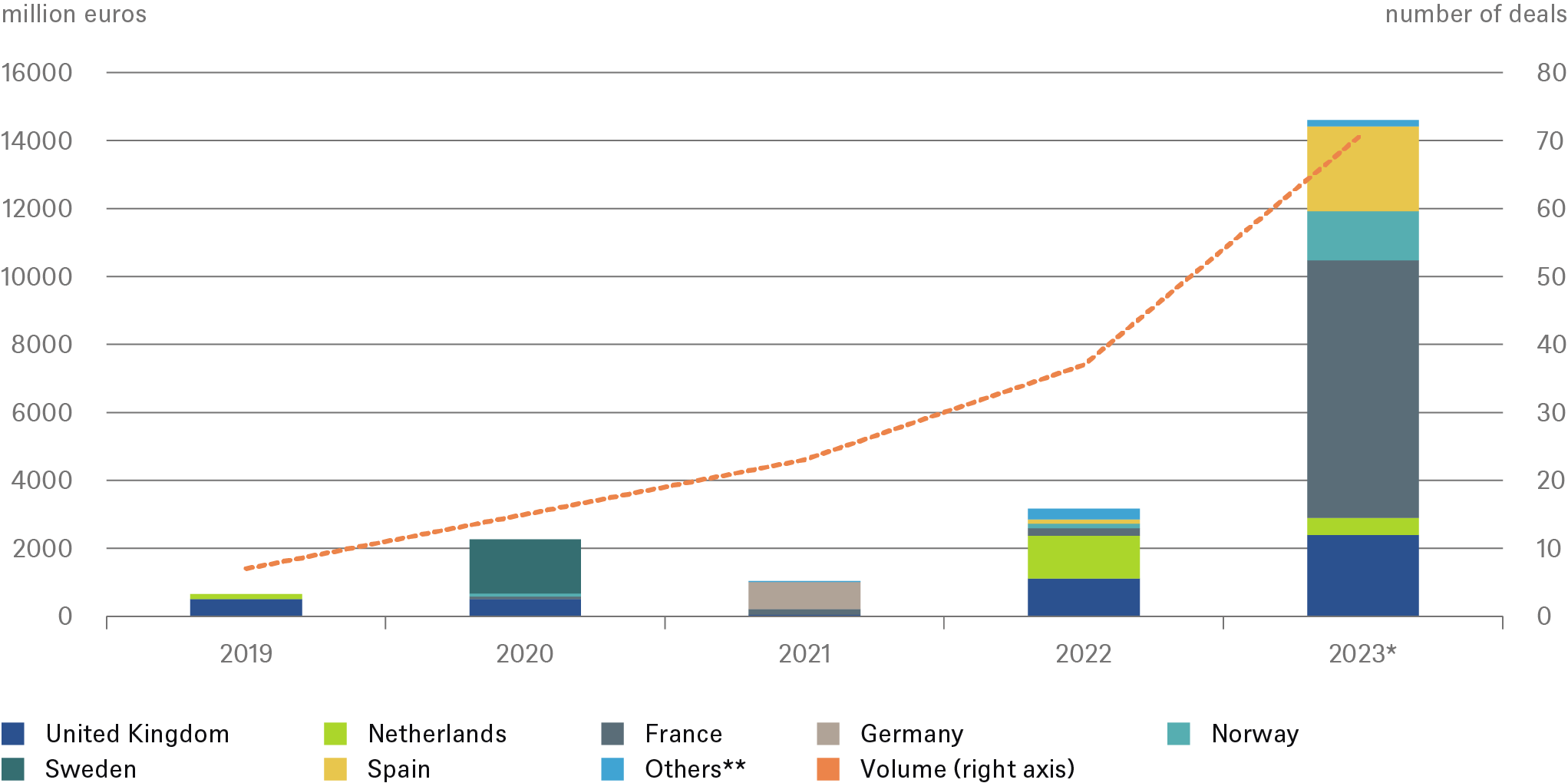- Home »
- Insights »
- CIO View »
- Chart of the Week »
- Making the electric car revolution work
One of the more unusual consequences of Russia’s 2022 invasion of Ukraine is the speeding up of the green transition. Compared to the pre-war forecasts, higher fossil prices triggered by Vladimir Putin’s latest war, together with generous subsidies in areas such as electric vehicles (EVs) may cut the timeline of reducing global CO2 emissions from energy combustion by as much as ten years, some observers think[1]. Such optimistic predictions reflect rapidly changing policy priorities. However, we would caution that significant obstacles remain in practice.
Transportation broadly, and EVs specifically, are a case in point. On both sides of the Atlantic, public charging stations are key potential bottlenecks for wide-spread EV adoption[2]. Europe, which has both more EVs already and denser populations often living in apartment where installing private charging stations is tricky, illustrates both the challenges and potential solutions. The European transport sector accounts for 26% of the continent’s CO2 emissions, compared to just 10% at the beginning of the 1970s[3]. Indeed, transportation is the only major sector that has seen emissions rise over the past 30 years[4]. Decarbonising European transportation is thus a key pillar of the European Commission’s Green Deal[5]. And within the transportation sector, road transport represented 77% of the sector’s overall emissions in 2020[6].
EV charging infrastructure is attracting more deal activity, but trends across countries are far from uniform

* 2023 includes all the live transactions
** Others Includes all countries where transaction values did not exceed 500 million euros in at least one year
Sources: Infralogic, Feb 2023, DWS Investment GmbH as of 4/12/23
Already, the European Union accounts for far fewer of the world’s charging stations than its EV fleet[7]. Without significant changes to both policies and business practices, this divergence could get a lot worse. However, there are also some bright spots, as our Chart of the Week illustrates. The Netherlands stands out among European countries when it comes EV infrastructure deployment and deal-making. Despite accounting for less than a tenth of the European Union’s EV fleet, it is already home to almost a third of the EU’s charging point infrastructure[8]. By taking a forward-looking approach with an eye to future demand, the Netherlands have also created a market place for infrastructure investments. Other comparative success stories include Spain, Portugal and Poland, which favour deploying greater numbers of fast charging points since these can serve a larger number of EVs compared to slow chargers.
Similar strategies urgently need to be adopted more widely. This will require infrastructure investments not just in charging stations, but also upgrades to power distribution systems, transformers for e-mobility purposes and increased renewable power generating capacity, creating plenty of opportunities to deploy private capital. EV charging points are an especially interesting niche to keep an eye on from an infrastructure portfolio allocation perspective, due to their long-term, low volatility, defensive returns, as well as a growing secondary market.



